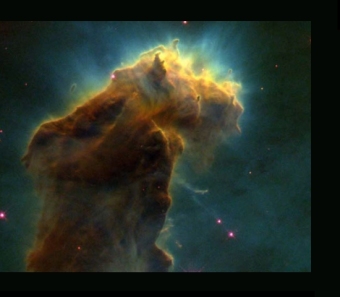|

A nebula is an interstellar cloud of matter, usually
gases (such as hydrogen), plasma and dust. Many nebulae are stellar
nurseries. Starfleet ships have visited, studied and explored hundreds
of nebulae throughout all five television series. Since starship
sensors and other systems apparently function poorly in some nebulae,
they were also often used by starships to strategic advantage in
conflicts. Ships would, for example, hide in these nebulae to avopid
detection by pursuing enemies. These nebulae were also important
sources for materials such as dilithium fuel.
In the Star Trek universe, at least ten classifications
of nebula are known (Class 1, Class 2, Class 3, Class 9, Class 11,
Class 17, Class J, Class K, Class T, Mutara class) and nearlly a dozen
types of nebula. In real astronomy, there are three types of nebulae:
emission nebulae, which shine by their own light; reflection nebulae,
which reflect light from nearby stars; and dark nebulae, which absorb
light and appear dark against a brighter background.
When cloudlike material in space is patchy, or of a form
that is difficult to categorize as a particular type of nebula, is
referred to as nebulosity.
Originally, the term "nebula" (a Latin word meaning
"mist") was applied to a variety of extended objects in the sky,
including what are now known to be external galaxies; for example, the
Andromeda Galaxy used to be, and occasionally still is, called the
Andromeda Nebula.
|
|
